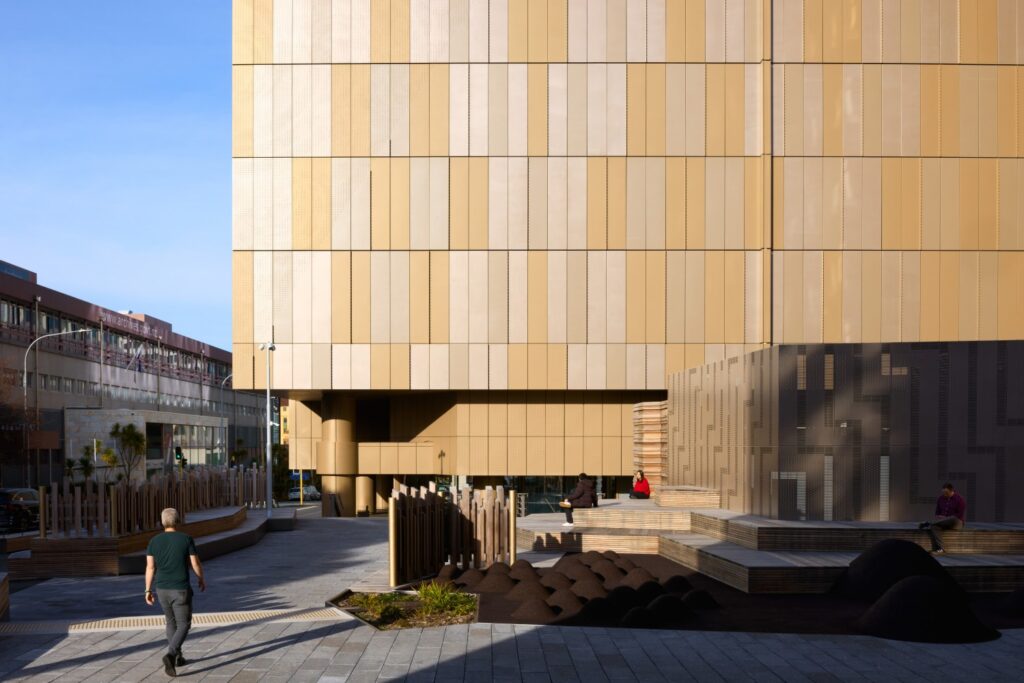New Zealand Archive Facility Surpasses Smithsonian & British Library in Protecting Taonga – Data
A $290 million New Zealand archive facility in Wellington has set a new global standard in safeguarding taonga and government records. Independent testing shows the Te Rua Archives New Zealand building surpasses the performance of world-leading institutions including the Smithsonian Institution, the British Library and the US Library of Congress, establishing itself as one of the most advanced cultural infrastructure projects ever delivered in New Zealand.
Why the New Zealand Archive Facility Matters
More than just a repository, Te Rua Archives is a once-in-a-generation civic project that unites the nation’s most precious records, cultural heritage and documentary collections in one purpose-built facility. Standing ten levels high, it is the most seismically resilient civic building in the Southern Hemisphere, designed to withstand a 1-in-1800-year earthquake while maintaining stable internal conditions to protect fragile materials.
Critically, the building’s façade ensures temperature and humidity remain within ±1°C for at least 48 hours without power—an extraordinary level of resilience that goes beyond UNESCO Memory of the World obligations and exceeds global archival standards.

New Zealand Archive Facility Outperforms Global Institutions
Independent testing confirmed that the New Zealand archive facility delivers airtightness and thermal control superior to the Smithsonian, the British Library, the US Library of Congress, and France’s Archives Nationales. By exceeding these benchmarks, Te Rua positions New Zealand as a global leader in the long-term preservation of cultural heritage and government records.
For context, the Smithsonian Institution in Washington D.C. is considered one of the world’s most advanced custodians of history, yet the New Zealand archive facility has now been measured against and surpassed its climate control performance.
Māori Design at the Heart of the Facility
A defining feature of the New Zealand archive facility is its cultural integration. The 4,000m² bronze rainscreen façade was co-designed with Manawhenua, led by artist and tohunga tā moko Rangi Kipa. Its Poutama pattern, symbolising genealogy, learning and growth, acknowledges the Pipitea Pā ancestral site while affirming the mana of the taonga protected within.
Kipa explains that the façade serves both as protection and narrative, weaving Māori knowledge systems and artistry into the building itself. It represents a cultural reminder for the nation, embedding identity into the very skin of the architecture.
Engineering Innovation Defines the Archive Facility
Engineers designed an innovative fixing system that eliminated thermal bridging, ensuring near-zero air leakage and unmatched airtightness. Testing to Australian and New Zealand conservation standards confirmed seismic resilience and climate stability far exceeding code requirements. These innovations provide confidence that the New Zealand archive facility can maintain preservation standards even under extreme conditions.
Delivered Through a Public-Private Partnership
The Te Rua Archives was delivered under a Public-Private Partnership (PPP) between Dexus and the Department of Internal Affairs, recognised as New Zealand’s most complex infrastructure project to date. Phill Stanley, Dexus portfolio manager, describes the façade as a technical and cultural breakthrough that demonstrates how New Zealand can compete globally. Nik Kemp, executive general manager for growth markets, says the PPP model reduced financial risk while enabling cultural, seismic and engineering goals to be fully realised.

Media Recognition and National Significance
The project has been widely covered by 1News, RNZ and Stuff, underscoring its national significance. Experts say the New Zealand archive facility represents the future of heritage protection, blending cultural values with engineering that sets new international benchmarks.
Impact PR on Communicating Infrastructure Innovation
At Impact PR, we see the New Zealand archive facility as a defining example of how infrastructure can embody both cultural respect and technical leadership. For businesses delivering projects of this scale, strategic communication is essential to ensure achievements are recognised nationally and internationally. As one of the top PR agencies New Zealand organisations rely on, we specialise in amplifying the stories of infrastructure, cultural heritage and engineering innovation. Our team ensures that world-first projects like Te Rua are positioned as benchmarks not just in New Zealand, but around the globe.
